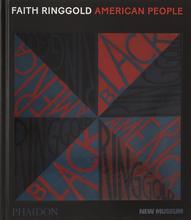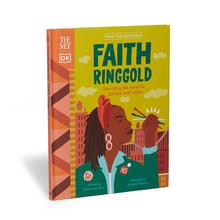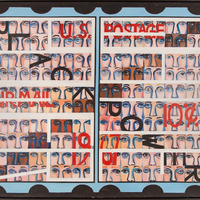More about Jo Baker’s Birthday
- All
- Info
- Shop

Sr. Contributor
Through her persona as Willia Marie Simone, Faith Ringgold crafted a series of canvas quilts to challenge the Eurocentric tradition of art by weaving in her own culture and experiences.
In her series called "The French Collection," Willia meets with several famous artists and other notable people. In episodes such as this one, Jo Baker’s Birthday, she meets with famous Black figures of her time and inserts them into a more diverse version of our artistic past.
Josephine Baker was, in a word, an icon. She was an incredible woman and you’d be hard-pressed to find a person who led a more eclectic, colorful, and impressive life. She was an erotic dancer, a Civil Rights activist, and a spy for the French Resistance during World War II who hid secret notes in her sheet music. I could go on...but she was most well known as a hugely successful performer in Europe and the United States.
Baker was also something of a kindred spirit to Faith Ringgold and her persona who interviews her in the piece by extension. Baker had much success in her long life in France, but found her experience in the United States to be unpleasantly different. She summarized her experience in a speech during the March on Washington, but you may not be familiar with it because it immediately preceded “I Have a Dream." Ringgold was born in Harlem and struggled to find success due to segregation. It wasn’t until she moved to France that she was able to build a career no longer pinned down by racism. Amidst the text in the quilt, Willia addresses this shared experience: “...reality is that Josephine is Black, and they would never have let her seek fame and fortune in the States. There her talent would be no talent at all. Her dance would be no dance at all. Her voice would be no voice at all. Her greatness would be no greatness at all … Her life would be no life—no beauty.”
Baker became famous for her dancing and scandalously risque costumes, such as a skirt made entirely of artificial bananas. Ringgold makes a nod to this costume with the fruit basket in the piece beside her. Baker was a symbol of sexual liberation so Ringgold chose to depict her comfortably lounging in semi-nudity. Her lack of attire is also a part of a reference to the painting Olympia by Manet. In that painting, there is a young white woman lounging on a bed while her Black maid presents her with a bouquet of flowers. The painting opened to a controversial reception because there are several implications throughout the piece that the woman depicted is a sex worker. (Olympia was apparently a popular name among French prostitutes at the time.) Baker is a far cry from Manet’s subject, not a woman shamed for sexuality but famed and freed for it. The reversal goes a step further, note the bouquet by Baker’s side and her white maid in the background.
Then, the references go even deeper. Maybe you’ve got a super keen eye and you noticed that the wallpaper in the back and that maid looked familiar. They’re both taken from Red Room (Harmony in Red) by Matisse. In Olympia, the black maid serves as little more than an accessory to the painting’s subject that furthers all the implications about her profession. So, Ringgold takes a white maid who was the main subject of another famous painting and sticks her in the background.
After wishing Baker a happy birthday, Willia continues with her French tour and goes on to meet such figures as Picasso, Langston Hughes, and Nora Zeale Hurston. In total, there are twelve story quilts of Ringgold’s reimagined vision of the past.
Sources
- BlackPast. "(1963) Josephine Baker, "Speech at the March on Washington" •." Blackpast. November 3, 2011. Accessed October 1, 2021. https://www.blackpast.org/african- american-history/speeches-african-american-history/1963-josephine-baker-speech-march -washington/.
- Gage, Simone. "Faith Ringgold's French Collection: Jo Baker's Birthday." Shifting Perspectives. December 02, 2020. Accessed September 28, 2021. https://mcam.mills.edu/publications/ shiftingperspectives/catalogue/simone.html.
- Glueck, Grace. "Colorful Patchwork Tales of Black and White, Life and Death." The New York Times. October 02, 1998. Accessed October 4, 2021. https://www.nytimes.com/1998/ 10/02/arts/art-review-colorful-patchwork-tales-of-black-and-white-life-and-death.html.
- "Jo Baker's Birthday." Saint Louis Art Museum. August 04, 2021. Accessed September 28, 2021. https://www.slam.org/collection/objects/26768/.
- "Siren of the Resistance: The Artistry and Espionage of Josephine Baker: The National WWII Museum: New Orleans." The National WWII Museum | New Orleans. February 1, 2020. Accessed October 1, 2021. https://www.nationalww2museum.org/war/articles/siren -resistance-artistry-and-espionage-josephine-baker.














